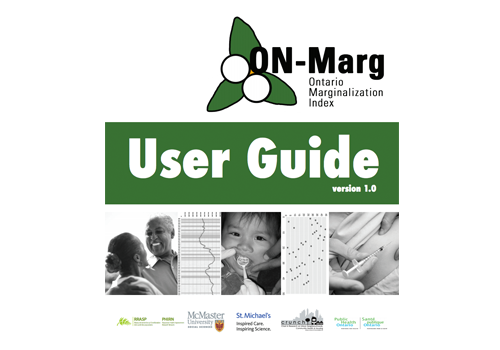The Ontario Marginalization Index (ON-Marg) is a census- and geographically-based index that can be used for planning and needs assessment, resource allocation, monitoring of inequities and research.
ON-Marg seeks to:
- show differences in marginalization between areas; and
- understand inequalities in various measures of health and social well-being, either between population groups or between geographical areas.
ON-Marg is an Ontario-specific version of the Canadian Marginalization Index (CAN-Marg), which has been in use since 2006 and is available here.
ON-Marg is multifaceted, allowing researchers and policy and program analysts to explore multiple dimensions of marginalization in urban and rural Ontario.
The four dimensions are:
- residential instability
- material deprivation
- ethnic concentration
- dependency
The index was developed using a theoretical framework based on previous work on deprivation and marginalization. It was then empirically derived using principal components factor analysis. It has been demonstrated to be stable across time periods and across different geographic areas (e.g. cities and rural areas). It has also been demonstrated to be associated with health outcomes including hypertension, depression, youth smoking, alcohol consumption, injuries, body mass index and infant birthweight.
The Canadian Marginalization Index (CAN-Marg) is a census- and geographically-based index that can be used for planning and needs assessment, resource allocation, monitoring of inequities and research.
CAN-Marg seeks to:
- show differences in marginalization between areas; and
- understand inequalities in various measures of health and social well-being, either between population groups or between geographical areas.
CAN-Marg is multifaceted, allowing researchers and policy and program analysts to explore multiple dimensions of marginalization in urban and rural Canada.
The four dimensions are:
- residential instability
- material deprivation
- ethnic concentration
- dependency
The index was developed using a theoretical framework based on previous work on deprivation and marginalization. It was then empirically derived using principal components factor analysis. It has been demonstrated to be stable across time periods and across different geographic areas (e.g. cities and rural areas). It has also been demonstrated to be associated with health outcomes including hypertension, depression, youth smoking, alcohol consumption, injuries, body mass index and infant birthweight.

